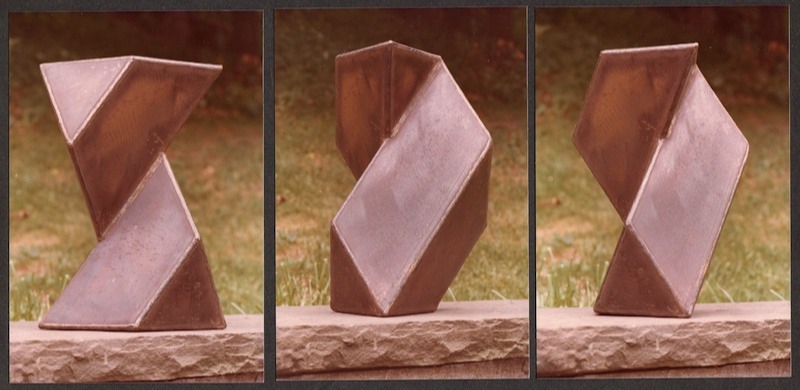Black Forest
Dublin Core
Title
Description
Black Forest by Robinson Fredenthal, 1977

In addition to creating Black Forest for the University of Pennsylvania, Robinson Fredenthal has also contributed numerous public art pieces to Philadelphia. His public artworks in Philadelphia include Fire Water ice and White Water.

Fredenthal was a graduate fine arts student, studying architecture. During his time at Penn, he was diagnosed with Parkinson’s, which slowly took away his ability to draw. However he did not let this prevent his exploration of geometric form. With the help of assistants, Fredenthal created a prolific body of work, all exploring the different ways simple geometry can be manipulated into more complicated objects.
The Black Forest was created with Fredenthal’s favorite form, the tetrahedron. It is not only one of the most basic geometric forms—it’s also one of the most stable. What Fredenthal is able to do is to create wholly unexpected forms that can unwrap within themselves like a Chinese puzzle, while using very basic geometric shapes. He is able to force viewers to reconsider basic geometry like the tetrahedron from a perspective that feels as if they’re looking at forms that are new and undiscovered, even if it’s made out of geometric shapes that viewers have lived with every day.
In exploring the power of geometry through sculpture, Fredenthal is able to share the excitement of construction and rediscovery through every piece he’s constructed. While all of his work is self-contained, each sculpture also builds upon another, illuminating viewers about how the world is constructed at every turn.
Within Fredenthal’s studio, there are shelves filled to the brim with small cardboard constructions of shape and form. For a studio show, he once created an invitation that was made very much like the way his sculptures were, forcing the viewer to twist and turn the shapes in order to see the invitation. In this sense, it enforces the excavationl nature of Fredenthal’s pieces. Rather than being constructional, his work can be viewed as explorations.

In addition, they tap into an almost primal understanding of form. No matter how basic the geometric base his sculptures are built upon, there’s always a heavy weight and mass to everything he builds. It doesn’t matter how small or large his construction end up becoming. They always feel massive.
Creator
Date
Coverage
References
http://www.robinfredenthal.com/page2/index.html
